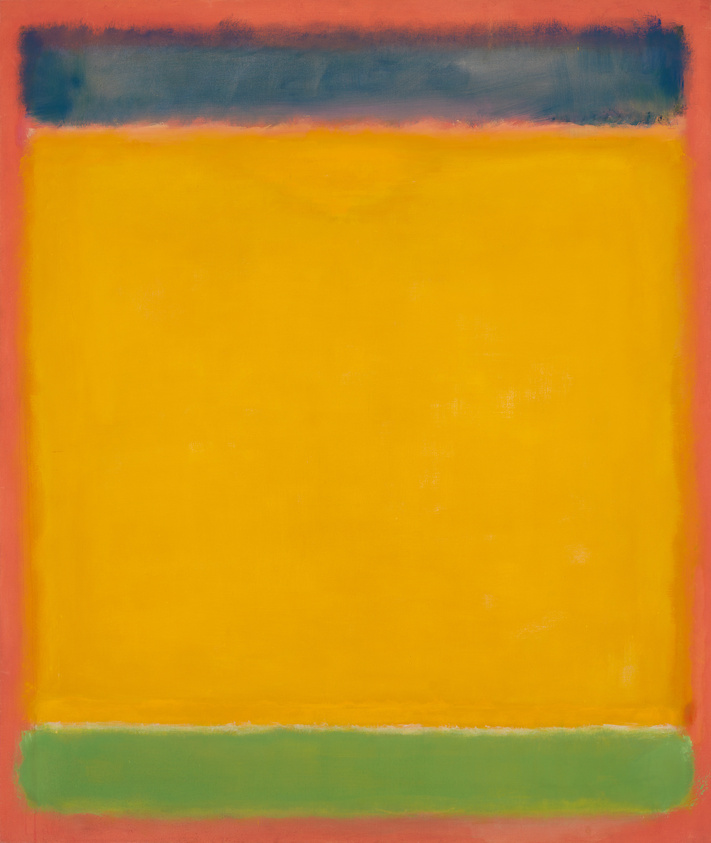Museum Barberiniuntil 09/25/2022
With the end of the Second World War, a new chapter was opened in western art: figuration was "out", abstraction was "in". "Abstract Expressionism" in particular became a form of expression of a "free world", which began its triumphant march from the USA with artists such as Jackson Pollock, Willem de Kooning and Franz Kline, while "Informel" painting, which was also abstract, had its center in Paris . The Barberini Museum in Potsdam now proves that these two most important trends of the post-war period were by no means as uninfluenced by one another as is often claimed.
By the end of the war in 1945, figurative art was discredited in the West. She had allowed herself to be harnessed too much to the respective ideological carts of fascism and communism.
Transatlantic Connections
As the exhibition makes clear at the outset, many protagonists of Abstract Expressionism had European-Jewish roots and/or had come to abstraction through Surrealism, which was spreading from Europe, as illustrated, for example, by an early painting by Mark Rothko.
Art form of a free world
The political appropriation of art, however, continued: Abstraction as a free form of expression of an artistic individual began its triumphal procession - not only in the USA. There, however, the export of Abstract Expressionism, which is regarded as an originally American art form, was specifically promoted. From the artist's point of view, it was about freedom of expression, about individuality, about turning to the spiritual, about transcendence.
But the group of those who joined the Informel in France was also international. They came from Germany, like Wols, who died young, or from Spain, like the Catalan Antoní Tàpies. And American artists also moved to Paris immediately after the war - for example the painter Joan Mitchell or her colleague Sam Francis, who, despite having lived in France for many years, are not regarded as representatives of Informalism but of Abstract Expressionism.
United in a magnificent room, their colorful color landscapes of brush strokes, color noses and enthusiasm for Claude Monet's late water lily paintings can be read and one understands why the term "Abstract Impressionism" was coined for this type of painting. It is such transatlantic connections and mutual influences that are made transparent room by room, from action painting to color field painting. A distinction between "Informel" and "Abstract Expressionism" seems increasingly wanton.
Impressive
The array of big names like Jackson Pollock, Barnett Newman and Mark Rothko is also impressive – all the more so since they are not used as "stars". Instead, for example, a 1945 painting by painter Janet Sobel illustrates "Illusion of Solidity" in comparison to Pollock's Drip Paintings, where he drew his inspiration from. In the vicinity of works by his wife Lee Krasner or Morris Louis, who died young, it becomes apparent that not only Pollock's experiments with the type of paint application led to great results - which were also eagerly received, accompanied and further developed in Europe.
It is remarkable how many high-quality works this exhibition brings together - especially by painters who are little known in this country, especially female painters. It not only impresses conceptually, but also with the quality and freshness of the images shown.
An opportunity not to be missed.
56,5 × 39,5 cm
Museum Frieder Burda, Baden-Baden
191 x 181 cm
Centre Pompidou, Paris. Musée national d'art moderne / Centre de création industrielle. Donation of the artist, 2011
Image: © bpk / CNAC-MNAM / Georges Meguerditchian
162,8 x 130,2 cm
Fondation Gandur pour l'Art, Genève
Image: Fondation Gandur pour l'Art, Genève. Photographer: Sandra Pointet
248 x 352 cm
ASOM Collection
195,6 x 130,8 cm
ASOM Collection
162,6 x 145,4 cm
Collection Richard and Karen Duffy, Chicago
Image: McCormick Gallery, Chicago
308,61 x 428,62 cm
Hasso Plattner Collection
Image: Lutz Bertra
142,6 x 157,8 cm
National Gallery of Art, Washington, Gift of The Mark Rothko Foundation, Inc.
Image courtesy of the National Gallery of Art, Washington, DC
180,3 x 188 cm
Collection of Thomas McCormick and Janis Kanter, Chicago










